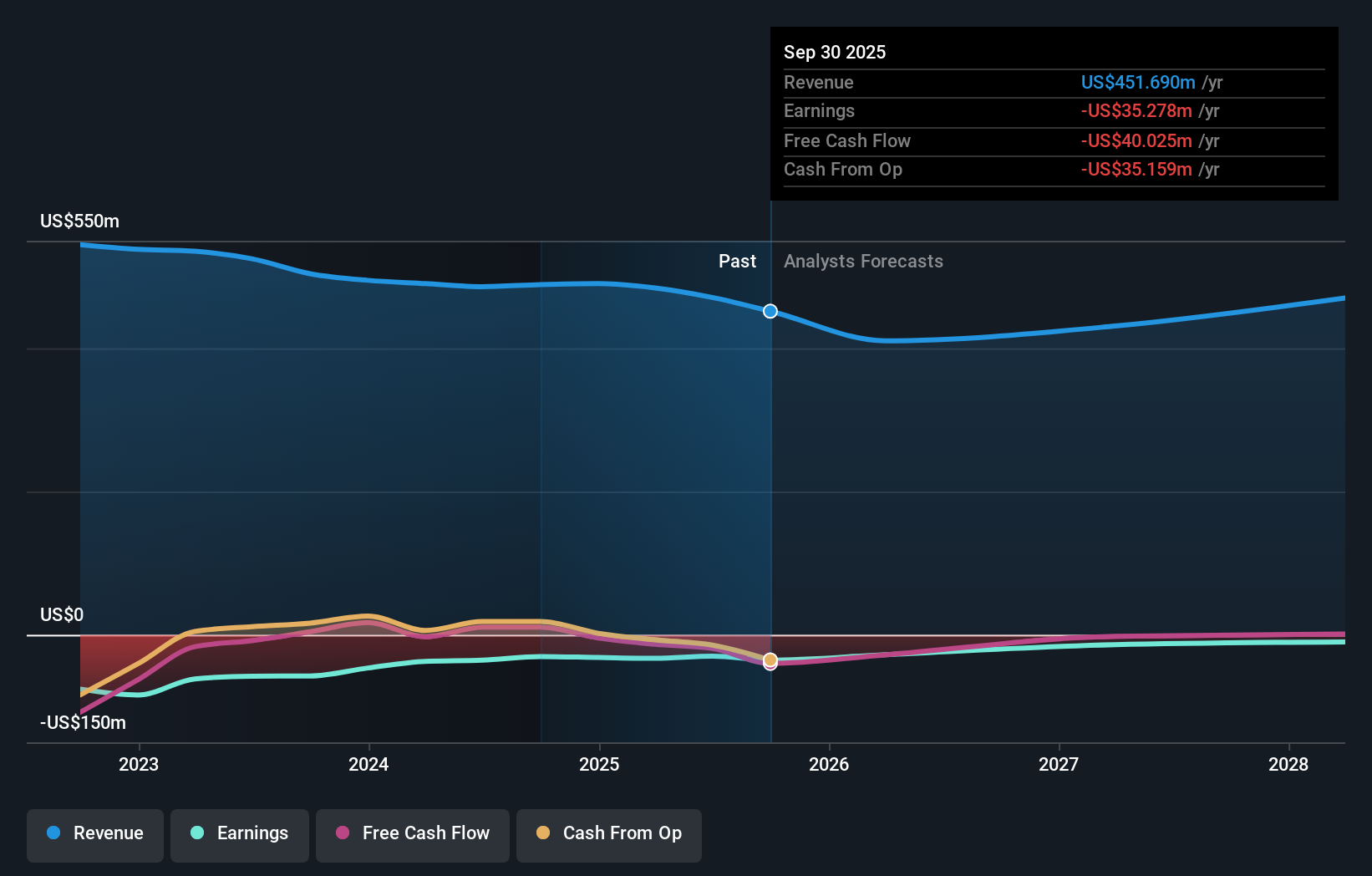- United States
- /
- Specialty Stores
- /
- NYSE:BARK
Analysts Have Been Trimming Their BARK, Inc. (NYSE:BARK) Price Target After Its Latest Report
As you might know, BARK, Inc. (NYSE:BARK) recently reported its second-quarter numbers. Revenues of US$107m beat expectations by a respectable 3.3%, although statutory losses per share increased. BARK lost US$0.063, which was 108% more than what the analysts had included in their models. Following the result, the analysts have updated their earnings model, and it would be good to know whether they think there's been a strong change in the company's prospects, or if it's business as usual. So we gathered the latest post-earnings forecasts to see what estimates suggest is in store for next year.

Taking into account the latest results, the three analysts covering BARK provided consensus estimates of US$410.3m revenue in 2026, which would reflect an uneasy 9.2% decline over the past 12 months. The loss per share is expected to greatly reduce in the near future, narrowing 22% to US$0.16. Yet prior to the latest earnings, the analysts had been forecasting revenues of US$412.8m and losses of US$0.14 per share in 2026. So it's pretty clear the analysts have mixed opinions on BARK even after this update; although they reconfirmed their revenue numbers, it came at the cost of a considerable increase in per-share losses.
Check out our latest analysis for BARK
The consensus price target fell 22% to US$2.33per share, with the analysts clearly concerned by ballooning losses. That's not the only conclusion we can draw from this data however, as some investors also like to consider the spread in estimates when evaluating analyst price targets. Currently, the most bullish analyst values BARK at US$3.00 per share, while the most bearish prices it at US$2.00. There are definitely some different views on the stock, but the range of estimates is not wide enough as to imply that the situation is unforecastable, in our view.
One way to get more context on these forecasts is to look at how they compare to both past performance, and how other companies in the same industry are performing. We would highlight that revenue is expected to reverse, with a forecast 17% annualised decline to the end of 2026. That is a notable change from historical growth of 4.7% over the last five years. Compare this with our data, which suggests that other companies in the same industry are, in aggregate, expected to see their revenue grow 6.0% per year. It's pretty clear that BARK's revenues are expected to perform substantially worse than the wider industry.
The Bottom Line
The most important thing to take away is that the analysts increased their loss per share estimates for next year. On the plus side, there were no major changes to revenue estimates; although forecasts imply they will perform worse than the wider industry. The consensus price target fell measurably, with the analysts seemingly not reassured by the latest results, leading to a lower estimate of BARK's future valuation.
Following on from that line of thought, we think that the long-term prospects of the business are much more relevant than next year's earnings. We have forecasts for BARK going out to 2028, and you can see them free on our platform here.
Before you take the next step you should know about the 1 warning sign for BARK that we have uncovered.
Valuation is complex, but we're here to simplify it.
Discover if BARK might be undervalued or overvalued with our detailed analysis, featuring fair value estimates, potential risks, dividends, insider trades, and its financial condition.
Access Free AnalysisHave feedback on this article? Concerned about the content? Get in touch with us directly. Alternatively, email editorial-team (at) simplywallst.com.
This article by Simply Wall St is general in nature. We provide commentary based on historical data and analyst forecasts only using an unbiased methodology and our articles are not intended to be financial advice. It does not constitute a recommendation to buy or sell any stock, and does not take account of your objectives, or your financial situation. We aim to bring you long-term focused analysis driven by fundamental data. Note that our analysis may not factor in the latest price-sensitive company announcements or qualitative material. Simply Wall St has no position in any stocks mentioned.
About NYSE:BARK
BARK
A dog-centric company, provides products, services, and content for dogs.
Excellent balance sheet and fair value.
Similar Companies
Market Insights
Community Narratives




